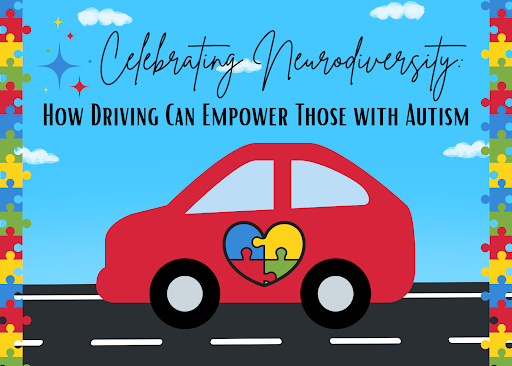
In today’s world, independence is a core value, and for individuals with autism, driving can play a pivotal role in achieving that independence. The ability to drive offers not just the freedom to travel but also the confidence to navigate the world on their own terms. While driving may come with unique challenges, it can be an incredibly empowering experience for those with autism. In this blog, we’ll explore how driving can positively impact individuals with autism, the importance of embracing neurodiversity, and how society can support them in their journey to independence.
The Empowering Role of Driving for Individuals with Autism
For individuals on the autism spectrum, driving provides an opportunity to break free from the limitations that others may not experience. Being able to drive allows individuals to travel without relying on others, making personal decisions about where to go and how to get there. For many, this autonomy is a huge confidence booster.
One of the most empowering aspects of driving for people with autism is the sense of control. Many individuals with autism face challenges in social situations, but driving allows them to maintain their personal space, reducing the social pressures that might be experienced in public transportation. This autonomy in transportation can lead to improved self-esteem, a greater sense of independence, and increased social and professional opportunities.
Overcoming the Challenges of Driving with Autism
It’s essential to acknowledge that driving is not a one-size-fits-all experience, especially for individuals with autism. Challenges like sensory sensitivities, anxiety, and difficulty with executive functioning can make driving seem intimidating. However, these challenges can be addressed with the right support, training, and accommodations.
- Sensory Sensitivities: Many individuals with autism experience heightened sensitivity to lights, sounds, or touch. Adaptive driving equipment, such as tinted windows to reduce glare or noise-canceling devices, can help make driving more comfortable.
- Anxiety: Driving can trigger anxiety for anyone, but it may be heightened for individuals with autism due to the need for constant attention and decision-making. To address this, gradual exposure to driving in low-stress environments, along with relaxation techniques, can help manage anxiety.
- Executive Functioning Challenges: Organizing thoughts, managing distractions, and multitasking can be difficult for some individuals with autism. Driving lessons that focus on improving focus, prioritizing tasks, and problem-solving in real-time can be extremely helpful.
The Importance of Embracing Neurodiversity
Neurodiversity refers to the understanding that differences in brain function and behavior, such as autism, are part of the natural variation of the human population. Embracing neurodiversity means recognizing that individuals with autism have their own strengths, challenges, and ways of engaging with the world, including the world of driving.
Society can support individuals with autism by promoting inclusivity, understanding, and providing the resources needed to make driving an achievable goal. By breaking down barriers and offering tailored solutions, we allow individuals to make the most of their abilities and live independently.
Supporting Autistic Individuals on Their Driving Journey
- Customized Driving Assessments: Programs like those offered by Driving to Independence specialize in adaptive driving assessments for individuals with disabilities, including autism. These assessments are designed to evaluate the unique needs of each driver and recommend the best training and equipment to ensure safety and confidence on the road.
- Patient and Understanding Instructors: Driving instructors who are experienced in working with neurodiverse individuals can make a huge difference. Patience and adaptability are key to providing a supportive and successful learning environment. It’s important to recognize the individual’s needs and offer a training plan that meets those needs.
- Education and Resources: Raising awareness in society about neurodiversity and providing educational resources for individuals with autism and their families is essential. By creating accessible resources and offering tailored support, we can ensure that individuals with autism have the tools and knowledge to succeed behind the wheel.
- Family and Community Support: Family and friends play an essential role in supporting individuals with autism in their journey toward driving. Encouraging open communication, understanding, and providing emotional support can help reduce the stress that often comes with learning to drive.
Conclusion
Driving has the potential to be an incredibly empowering experience for individuals with autism, offering them a greater sense of independence and access to new opportunities. By embracing neurodiversity, providing the necessary support and resources, and ensuring that driving training is tailored to individual needs, we can help individuals with autism navigate the road to independence. At Driving to Independence, we are dedicated to supporting individuals with disabilities in their pursuit of mobility and confidence. If you or a loved one is interested in exploring driving independence, contact us today to learn more about our services.
